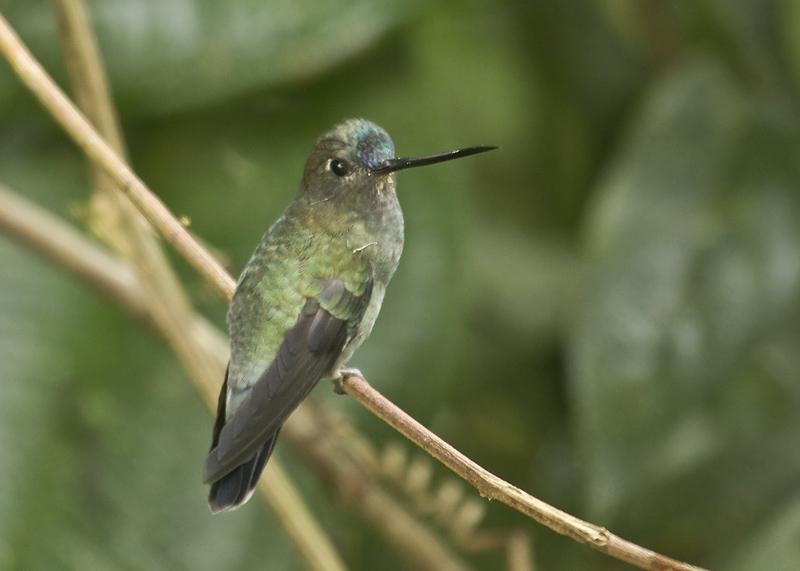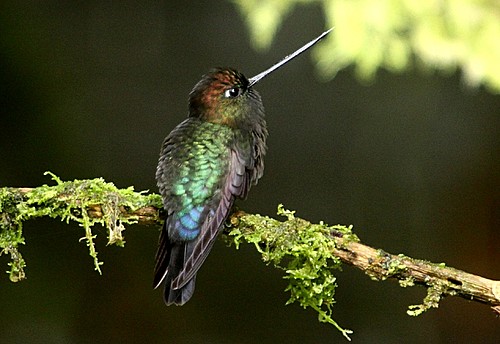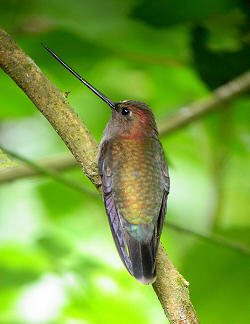
Doryfera ludovicae
SUBFAMILY
Trochilinae
TAXONOMY
Trochilus ludovicae Bourcier and Mulsant, 1847, Buena Vista,
east Andes above Villavicencio, Meta, Colombia. Two subspecies
are recognized.
OTHER COMMON NAMES
French: Porte-lance de Louise; German: Grьnstirn-
Lanzettschnabel; Spanish: Colibri Picolanza Mayor.
PHYSICAL CHARACTERISTICS
4.3–5.1 in (11–13 cm); female 0.19–0.21 oz (5.5–6.0 g), male
0.2–0.23 oz (5.9–6.4 g). Bill long, slightly upturned. Male with
frontlet glittering green, crown and nape dark coppery-bronze,
shading to bronzy-green on back; uppertail-coverts blue; tail
black, narrowly tipped with dull grey; underparts dull, dark
greenish bronze, darker and greener on throat. Female similar to
male but frontlet smaller or absent. Immatures similar to adults.
DISTRIBUTION
D. l. veraguensis: north central Costa Rica to western Panama;
D. l. ludovicae: extreme eastern Panama (Cerro Tacarcuna),
Colombia and western Venezuela, south through Andes to
northwestern Bolivia (east slope only from central Ecuador
southwards).
HABITAT
Mid-strata and lower canopy of cloudforest and humid lower
montane forest. Males often found along ridges while female
prefers ravines and gorges particularly for nesting. Sometimes
down at shrub-height. Mainly 2,450–7,550 ft (750–2,300 m).
BEHAVIOR
Territorial species, defending stands of flowers against other
hummingbirds and conspecifics. High pitched melodious song.
FEEDING ECOLOGY AND DIET
Visits epiphytes with long, tubular, usually pendent corollas,
including Ericaceae (Psammisia, Cavendishia, Macleania), Loranthaceae
(Psittacanthus), Rubiaceae, and Gesneriaceae. Frequently
flycatches, sallying from perch in canopy or along stream, or
hover-hawks low over stream; also hover-gleans arthropods
from vegetation.
REPRODUCTIVE BIOLOGY
Breeds in Costa Rica in the latter half of wet season to start of
dry (August to January); in Colombia nesting recorded between
July and late January. Nest a bulky cup of moss, treefern scales,
fine fibers and cobwebs in dark, usually humid site; attached to
hanging rootlet or vine rock overhang in ravine or gorge. Two
eggs; incubation 19 days; fledging period 25 days.
CONSERVATION STATUS
Generally uncommon to locally fairly common in suitable
HABITAT
throughout range.
SIGNIFICANCE TO HUMANS
None known.
Other popular Animals
Photo Gallery of - Green-fronted lancebill




 Animalia Life
Animalia Life